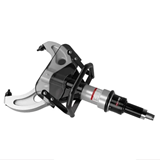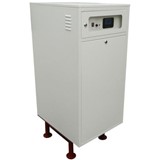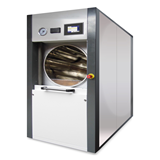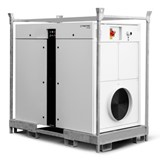Find the best magnetic lifters and bench grinders for your Australian workshop. Get practical advice on safety, maintenance, and selecting equipment that meets AS standards.
Key takeaways
- Magnetic lifters safely handle ferrous materials with capacities ranging from 100kg up to 6,000kg, essential for Australian manufacturing, metal fabrication, and warehousing operations.
- Bench grinders, priced typically between $200 and $1,500+, are vital for metal finishing, sharpening, and shaping across industries such as automotive repair and fabrication.
- Compliance with Australian Standard AS 4991-2004 is mandatory for magnetic lifters to ensure safe and reliable lifting operations.
- Bench grinders must meet electrical safety standards (AS/NZS 60745) and Work Health and Safety (WHS) regulations to ensure operator protection.
- Selecting the right equipment depends on load capacity, power rating, safety features, and compatibility with your specific workshop environment and materials.
- Regular maintenance, operator training, and inspection are key to maximising tool performance, safety, and lifespan.
Understanding magnetic lifters: how they work and why they matter
Magnetic lifters are essential lifting tools in Australian industrial workshops, enabling the safe and efficient handling of heavy, ferrous materials like steel plates and blocks without the need for slings or hooks. They use strong magnetic fields to generate lifting force, significantly reducing the risk of injury and damage associated with traditional lifting methods.
There are three main types of magnetic lifters:
- Permanent magnetic lifters use powerful permanent magnets, providing a reliable and energy-efficient lifting method without requiring electricity. These are low maintenance and ideal for static lifting needs.
- Electro magnetic lifters generate magnetic force via electric current, allowing for adjustable lifting power. They require a power source, making them suitable for variable load demands but dependent on reliable electricity.
- Electro-permanent magnetic lifters combine both technologies, offering the energy efficiency of permanent magnets with the switchable power of electromagnets. These are increasingly popular in Australia for their versatility and reliability.
Australian industries from steel manufacturing to warehousing rely heavily on magnetic lifters due to their efficiency and safety advantages. Capacities typically range from 100kg for smaller models up to 6,000kg or more for heavy-duty applications. Prices vary accordingly, starting around $500 for basic permanent models and exceeding $10,000 for advanced electro-permanent units.
Bench grinders: essential tools for metalworking and more
Bench Grinders are fixed power tools equipped with abrasive wheels, used extensively for grinding, sharpening, shaping, and deburring metal parts. Their widespread use spans automotive workshops, metal fabrication, and tool maintenance facilities across Australia.
There are several bench grinder types:
- Standard bench grinders typically have one or two wheels sized between 150mm (6 inch) and 250mm (10 inch), suitable for general grinding.
- Variable speed grinders offer adjustable RPM, allowing operators to match wheel speed to material requirements for more precise work.
- Specialised grinders include buffing or polishing wheels for finishing tasks or wire brushes for surface cleaning.
Bench grinders generally feature motors rated between 150W and 750W, with typical speeds from 2,800 to 3,600 RPM. Australian buyers should expect prices from about $200 for entry-level models up to $1,500 or more for industrial-grade machines with advanced safety features.
Compliance and safety standards: meeting Australian requirements
For Magnetic Lifters compliance with AS 4991-2004 is mandatory. This Australian Standard outlines design, manufacture, testing, and safe use criteria to prevent accidents. Key aspects include:
- Design requirements ensuring devices can handle specified loads with adequate safety factors (minimum 3:1).
- Material standards demanding high-quality, durable metals suitable for lifting applications.
- Manufacturing controls including proof load and non-destructive testing to verify integrity.
- Operational guidelines requiring routine inspections, maintenance, and proper training.
For bench grinders, while no specific AS standard governs the tool itself, compliance with AS/NZS 60745 (electrical safety for hand-held motor-operated tools) and Work Health and Safety (WHS) laws is essential. This includes:
- Using wheel guards and tool rests.
- Providing emergency stop switches.
- Ensuring operators wear personal protective equipment (PPE) like safety glasses and gloves.
- Conducting regular equipment inspections.
How to choose the right magnetic lifter for your workshop
When selecting a magnetic lifter, consider:
- Load capacity: Ensure the lifter can safely handle your heaviest materials. Overspecify where possible to enhance safety and durability.
- Safety factor: AS 4991 recommends a safety factor of at least 3:1.
- Material thickness and type: Magnetic lifters perform best with certain thicknesses of ferrous materials; verify compatibility.
- Operating environment: Factors such as temperature, humidity, and chemical exposure can affect performance.
- Certification: Always request documentation confirming AS 4991 compliance and testing.
- Ergonomics and ease of use: Features like handle design, weight, and controls impact operator efficiency and safety.
- Maintenance requirements: Opt for models with clear maintenance instructions and locally available parts.
How to select the right bench grinder for your needs
Consider the following factors:
- Wheel size: Larger wheels remove material faster but require more power.
- Motor power: Higher wattage suits continuous or heavy-duty grinding.
- Speed control: Variable speed grinders allow flexibility for different metals and finishes.
- Wheel type: Select wheels based on your typical tasks (coarse grinding, fine sharpening, polishing).
- Safety features: Look for secure guards, eye shields, tool rests, and emergency stops.
- Supplier reputation and warranty: Choose trusted Australian suppliers offering warranties and support.
Equipment compatibility and workflow integration
To maximise workshop efficiency and safety, magnetic lifters and bench grinders must integrate seamlessly into your workflow:
- Placement: Position magnetic lifters close to loading bays or steel storage for quick access. Mount bench grinders on solid benches in well-lit fabrication areas but clear of lifting zones.
- Workflow: Use magnetic lifters to deliver materials directly to grinding stations, reducing manual handling.
- Power supply: Ensure your electrical infrastructure supports equipment needs — bench grinders often require 240V circuits, while electro lifters may need dedicated power.
- Safety zones: Clearly mark areas and provide PPE stations accessible to all operators.
Common mistakes to avoid
- Underestimating load capacity: Using undersized magnetic lifters can cause accidents and equipment damage.
- Neglecting inspections: Failure to inspect wheels and magnets regularly leads to premature failure and safety hazards.
- Improper training: Operators unaware of correct procedures increase risk of injury.
- Ignoring maintenance: Skipping scheduled servicing reduces tool lifespan and reliability.
- Inadequate safety equipment: Missing guards or PPE increases workplace incidents.
- Poor workshop layout: Crowded or poorly lit areas create hazards and inefficiencies.
Maintenance and ongoing training: key to safety and longevity
- Magnetic lifters: Clean magnets after use to maintain strength, lubricate moving parts, and perform regular load testing as per AS 4991 guidelines.
- Bench grinders: Inspect wheels daily for cracks or wear, replace damaged wheels immediately, and clean/lubricate moving parts per manufacturer instructions.
- Training: Provide regular refresher courses on safe lifting and grinding practices.
- Documentation: Maintain detailed records of inspections, maintenance, and training for compliance and audits.
Frequently asked questions (FAQs)
Q: How often should magnetic lifters be inspected?
AS 4991 recommends comprehensive inspections every six months, with daily pre-use checks by operators.
Q: What is the typical lifespan of a bench grinder?
With proper use and maintenance, bench grinders can last 10+ years.
Q: Can magnetic lifters be used on coated or painted metals?
Coatings may reduce magnetic effectiveness. Consult manufacturers for compatibility.
Q: Are there rental options for magnetic lifters and bench grinders in Australia?
Yes, many suppliers offer rentals, which can be cost-effective for short-term projects.
Q: What safety training is required to operate magnetic lifters and bench grinders?
Operators should receive formal training on safe handling, load capacity, equipment inspection, and emergency procedures. Compliance with workplace health and safety (WHS) standards is mandatory.
Q: Can bench grinders handle non-ferrous metals?
Bench grinders can work on non-ferrous metals like aluminium and copper, but appropriate wheels and speeds should be selected to prevent damage and overheating.
Q: What maintenance tasks can operators perform themselves?
Operators can perform daily checks, cleaning, wheel inspections, and basic lubrication. More technical servicing should be done by qualified technicians.
Q: How can I verify that a magnetic lifter complies with AS 4991?
Request certification documents and proof load test reports from the supplier. Ensure the device carries Australian compliance markings.
Conclusion
Selecting the right magnetic lifters and bench grinders is vital for Australian workshops to ensure safe, efficient operations. Understanding the types available, meeting Australian standards like AS 4991 and AS/NZS 60745, and committing to regular maintenance and training will maximise your investment’s value and workplace safety.
For personalised advice tailored to your workshop’s needs, consult reputable Australian suppliers and safety experts who can help you choose compliant, reliable equipment that fits your operational demands.






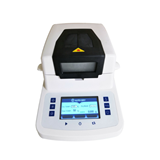
-160x160-state_article-rel-cat.jpg)

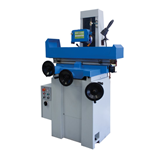




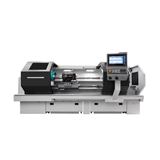
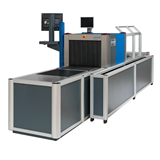
-160x160-state_article-rel-cat.png)
